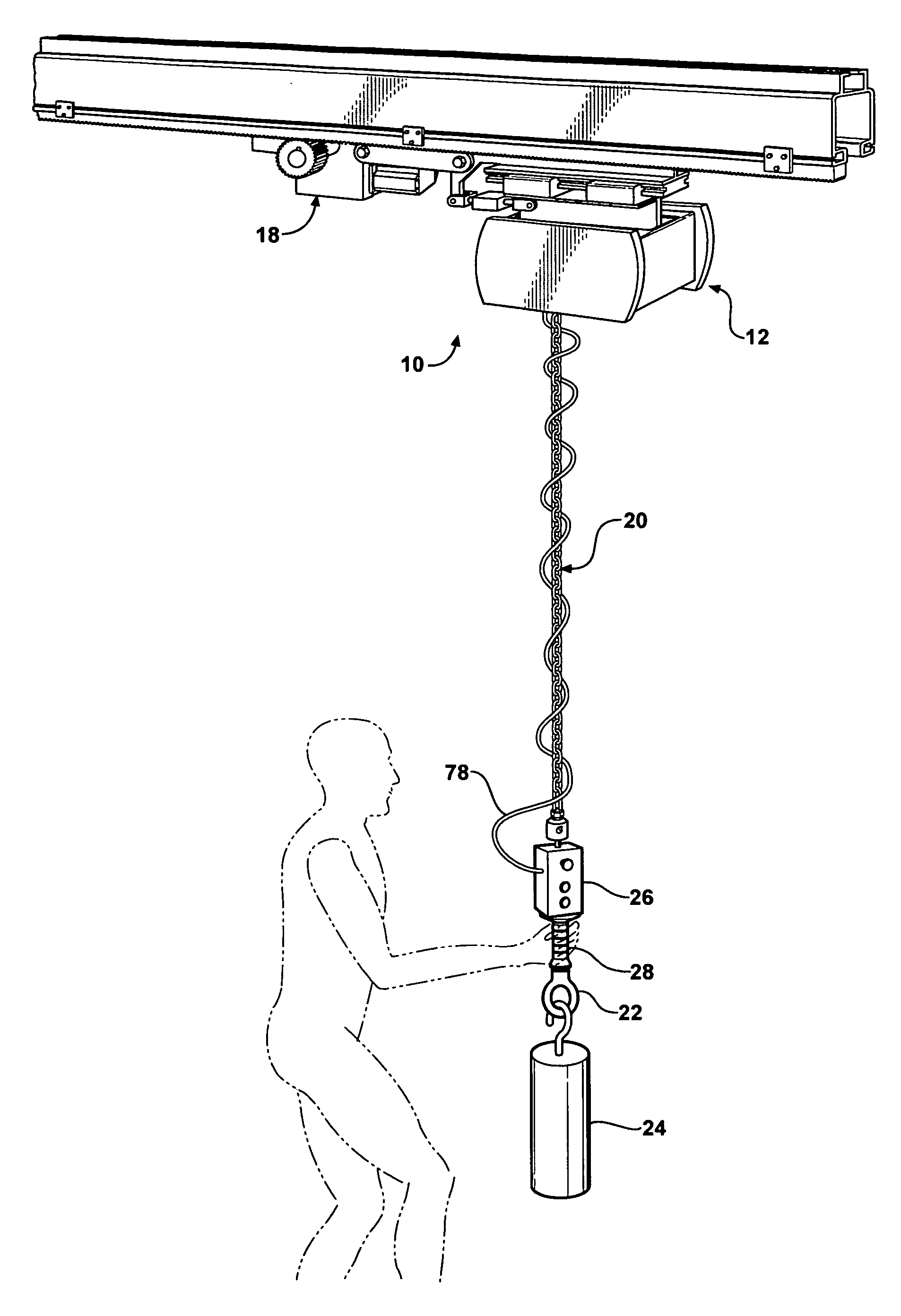Electric motor driven traversing balancer hoist
a technology of electric motors and balancers, which is applied in the direction of hoisting equipment, transportation and packaging, instruments, etc., can solve the problems of complicated control of servo motors, affecting the performance of trolley drive systems, and causing a lot of damage to the system, so as to prevent any possible system effects and improve the performance of the trolley drive system
- Summary
- Abstract
- Description
- Claims
- Application Information
AI Technical Summary
Benefits of technology
Problems solved by technology
Method used
Image
Examples
Embodiment Construction
[0046] In the following detailed description, certain specific terminology will be employed for the sake of clarity and a particular embodiment described in accordance with the requirements of 35 USC 112, but it is to be understood that the same is not intended to be limiting and should not be so construed inasmuch as the invention is capable of taking many forms and variations within the scope of the appended claims.
[0047] Referring to the drawings and particularly FIG. 1, a hoist system 10 according to the present invention includes an upper hoist assembly 12 supported on a trolley 14 able to be traversed along an overhead rail 16 by a trolley tractor drive 18 pulling its upper hoist assembly 12 when activated.
[0048] A hoist chain 20 is driven up and down by a chain drive arrangement in the upper hoist assembly 12, described below. The hoist chain 20 is connected to a lifting eye 22 on which the load 24 is hung.
[0049] A control grip 28 extends below the control box 26.
[0050] T...
PUM
 Login to View More
Login to View More Abstract
Description
Claims
Application Information
 Login to View More
Login to View More - R&D
- Intellectual Property
- Life Sciences
- Materials
- Tech Scout
- Unparalleled Data Quality
- Higher Quality Content
- 60% Fewer Hallucinations
Browse by: Latest US Patents, China's latest patents, Technical Efficacy Thesaurus, Application Domain, Technology Topic, Popular Technical Reports.
© 2025 PatSnap. All rights reserved.Legal|Privacy policy|Modern Slavery Act Transparency Statement|Sitemap|About US| Contact US: help@patsnap.com



